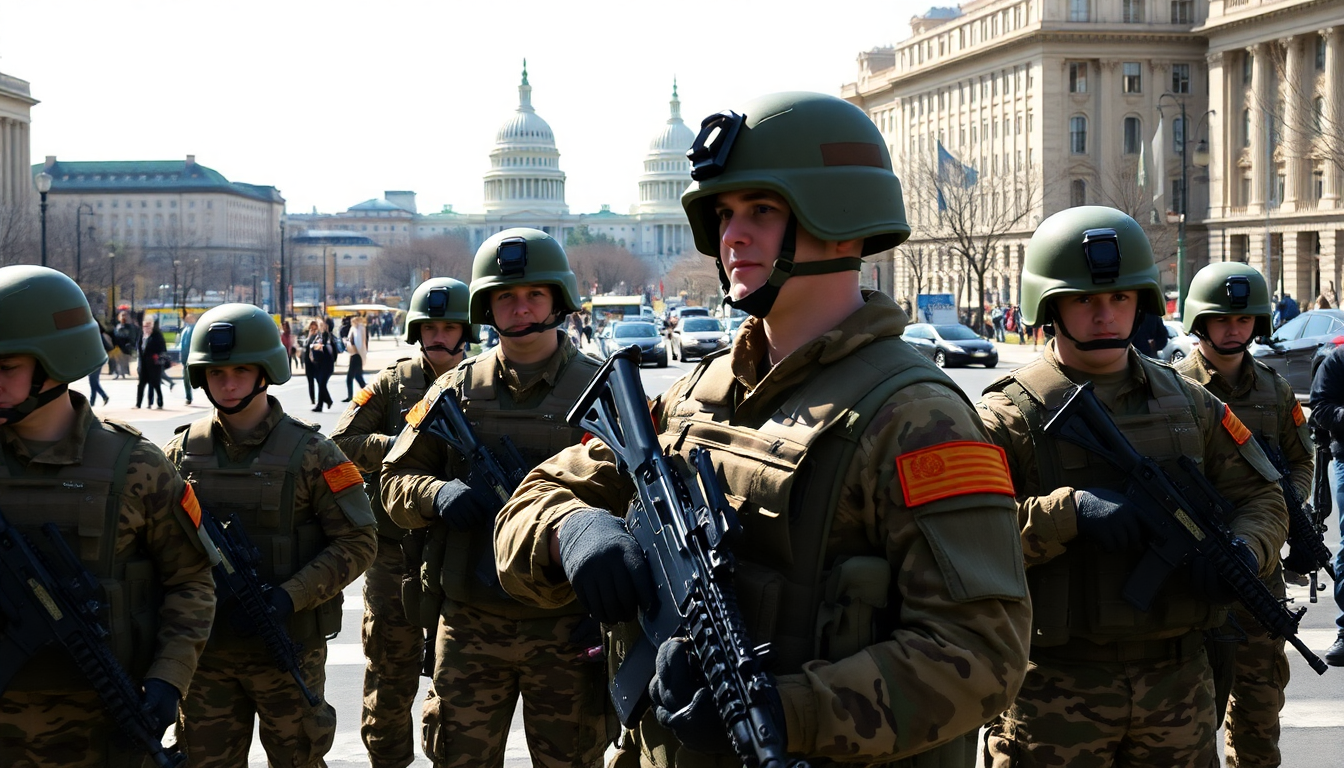Table of Contents
The recent decision by the Pentagon to allow National Guard troops to carry firearms in Washington marks a significant shift in how law enforcement operates in the nation’s capital. But what does this really mean for the average citizen? With nearly 2,000 National Guard members currently stationed in Washington, this escalation in their role raises important questions about public safety and the future of local policing.
Context of the Policy Change
At first, the Pentagon made it clear that guard members wouldn’t be armed during their deployment. So, what triggered this change? Defense Secretary Pete Hegseth’s recent order allowing firearms has sparked conversations about the motives behind this shift.
While the Defense Department hasn’t elaborated much, the timing coincides with President Donald Trump’s heightened focus on crime, homelessness, and illegal immigration in the capital. The increase in troops from various Republican-led states further highlights the growing military involvement in urban policing.
Traditionally, the National Guard has been focused on non-law enforcement duties, like protecting important landmarks and managing crowd control. Interestingly, their presence has affected the local security landscape while also shaping interactions with residents. Some guards have been seen engaging in light-hearted activities, like feeding squirrels or assisting commuters.
This mix of military presence and community engagement leads us to wonder: is a military response really the best solution to urban challenges?
Implications for Law Enforcement
The decision to arm National Guard troops could redefine their role in federal law enforcement.
As their involvement in Washington’s policing evolves, we must consider the implications for civil liberties and community relations. The military’s presence in a city with a predominantly Democratic population has already sparked debates around public safety and the appropriate use of force.
Moreover, as the National Guard gains these new capabilities, there’s a real risk of blurring the lines between military and civilian law enforcement. This shift raises crucial discussions about accountability, oversight, and the long-term impacts on community safety. Observing these changing dynamics in Washington, it’s vital to stay alert about how these developments might shape public perceptions of safety and trust in law enforcement agencies.
Looking Ahead: Future Developments
As things continue to unfold in Washington, keeping an eye on the evolving role of the National Guard alongside local law enforcement strategies will be essential. The introduction of firearms for guard members may signal a new chapter in urban policing—one that will require thoughtful consideration of community needs and safety protocols.
In the upcoming months, further discussions are likely regarding the effectiveness of this military intervention and its broader implications for policing in urban areas across the United States. Engaging community leaders and law enforcement officials will be critical in ensuring that the changing role of the National Guard aligns with the values of public safety and community involvement. How will these conversations shape the future of policing? Only time will tell, but one thing is clear: this situation is one to watch.





